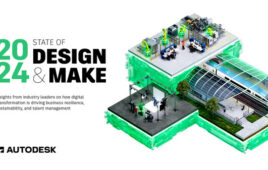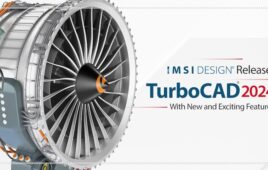Using simulation as part of the design process involves shifting fluid flow and heat transfer simulation from the CFD guru to the design engineer. That, in turn, requires much of the know-how possessed by the guru to be supplied to design engineers like you and me in the form of built-in intelligence, so the software automates many of the decisions and tasks related to the CFD process, leaving us engineers to focus on design performance and optimization.
Best in class companies have shown a willingness to adopt new technologies if it serves their mission: giving their customers more of what they want. In the case of fluid flow and heat transfer simulation, this means integration within the design engineering process.
By creating a collaborative, digital design study environment more knowledge is gained and applied when the cost of change is lowest, translating into a more robust, innovative design that maximizes revenue and profitability through the entire product lifecycle. Typically, effective digital flow and thermal prototyping requires CFD to function in concert with a 3D CAD system to enable the digital testing of numerous scenarios as part of an interactive design study. This category of technology is commonly referred to as upfront CFD.

Making design decisions from 3D simulation data
requires a flexible, interacative design study environment
Enablers of Upfront CFD
CAD-driven process: The design environment for best in class companies is 3D CAD and there are many advantages to extending this environment for simulation. It’s important to note that this doesn’t imply all simulation must be done within, or embedded in, the CAD interface. In fact, there are limitations of CAD-embedded simulation.
1. The CAD interface often lacks the visualization, design study, and decision-making tools necessary for simulation users to achieve project goals and organizational effectiveness.
2. The CAD interface actually limits the number and pace of functionality and innovation available to simulation users.
Design study environment: CFD supplies much more design performance data than physical testing; instead of data from a few probes, data is available at every conceivable location. More importantly, this data can be produced for dozens of 3D design scenarios. Without a well constructed design study environment in which to visualize this mountain of simulation data organizational effectiveness is more likely to be hindered than helped.
Built-in intelligence: Shifting fluid flow and heat transfer simulation from the CFD guru to the design engineer requires CFD expertise to be supplied to engineering users in the form of built-in intelligence. The simulation software is required to automate many of the decisions and tasks related to the CFD process, leaving the engineer to focus on design performance and its optimization.
Decision and task automation checklist
Flow volume creation: CFD simulations require a representation for all the physical space within or around the CAD assembly. This is done via a Boolean extraction from the CAD model to represent it and is referred to as the flow region in the simulation; this procedure can become a real bottleneck for design engineers unless it is fully automated.
Mesh generation: All forms of simulation require the geometric model to be broken down into discrete sections (i.e. mesh elements) so the flow and thermal dynamics in that area can be accurately calculated. Realistically, if engineers are asked to accept ownership for this prerequisite the use of simulation is often abandoned. For this reason the meshing task must be fully automated. CFD packages using the Finite Element Method tend to provide the highest level of meshing automation.
Mesh element refinement: Meshes must be refined to ensure accurate simulations results; most design engineers simply don’t possess the know-how for this procedure so it’s vital that upfront CFD software do it for them.
Solver selection: Selecting solvers is the bane of mathematicians and physicists, not design engineers; every CFD package includes a wide array of solvers which may be necessary at specific moments in the simulation process; a good upfront CFD package fully automates this selection process and makes it invisible to the engineer.
Solution convergence: With so many complex computations taking place how does the user know when the simulation results are ready for review? Most engineers err on the side of caution and run the simulation for hundreds of iterations more than is necessary. Modern upfront CFD systems monitor the convergence process and notify the engineer when results are ready.
Solution scope: CFD is only useful if it can simulate the flow and thermal dynamics that impact the performance of the product being designed. This requirement is often the greatest worry among engineers but in most situations it is unwarranted. After more than 40 years of commercial development the technology has become comprehensive and standard. Within the upfront CFD category most products provide the necessary solution scope for most engineering projects. The areas of wider discrepancy have already been noted in the upfront CFD enablers.

Blue Ridge Numerics, Inc.
www.cfdesign.com
::Design World::
Filed Under: Digital manufacturing, Software • simulation, ENGINEERING SOFTWARE





Tell Us What You Think!